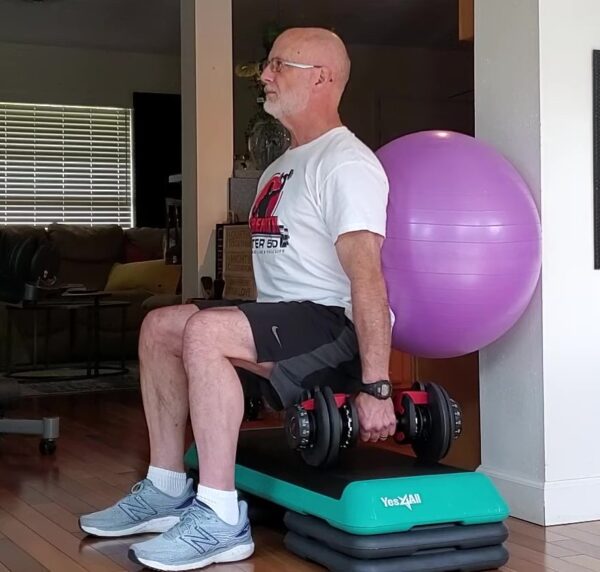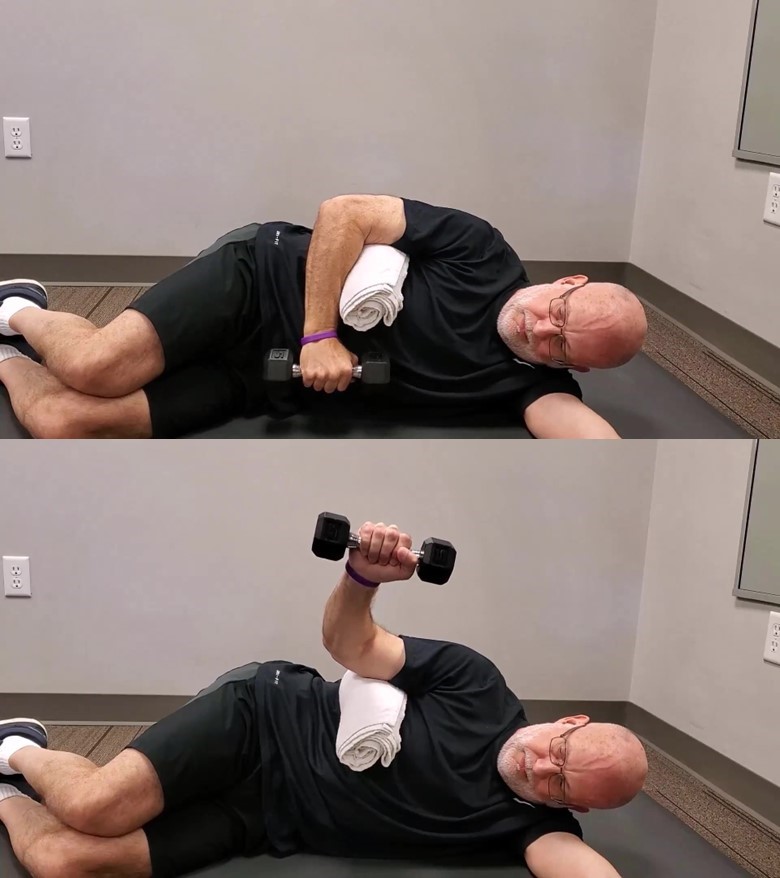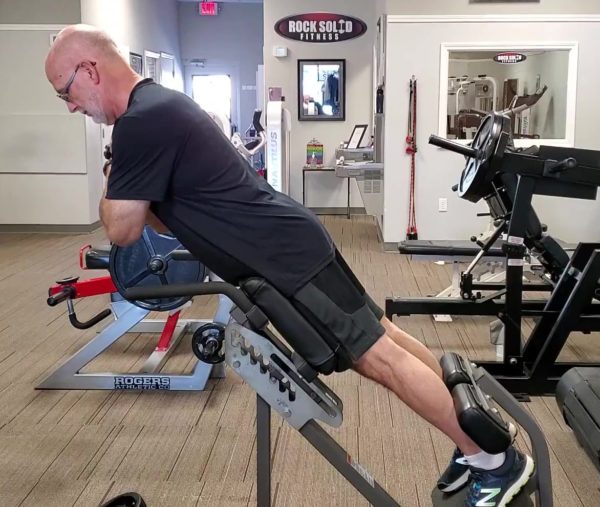Resistance exercises offer numerous benefits for older adults, helping maintain muscle mass, strength, and overall physical function as we age. These exercises involve working against resistance, whether from free weights, machines, or body weight, to challenge and strengthen muscles. Regular resistance training can significantly improve an older adult’s quality of life, enhancing mobility, balance, and independence.
Physical activity guidelines for older adults now universally include resistance training; however, these recommendations are typically very vague. The common prescription is to include 2 or more days of muscle strengthening activities to your weekly routine.
But what does that mean? Is it 2, 3 or more days per week? And what specifically should you do in each workout?
In this post, We’ll go over the best resistance exercises for older adults, and how to do them to get and stay strong safely.
What are the best resistance exercises for older adults?
As the saying goes, a chain is as strong as it’s weakest link, and the same hold true when it comes to strength training for older adults.
You want to cover your full body as much as you possibly can and try not to neglect any body part. (Sorry guys, the days of bench presses and curls only are over 😉)
Lower Body Exercises
Squats
First and foremost let me say that I do not recommend barbell squats.
Holding the barbell in place on your back puts your shoulder joints in an extremely vulnerable position, and is a recipe for disaster. And resting a heavy barbell on your spine is not good for it. You should always be good to your spine. Also, there’s no way to exit the exercise safely at any time, which is one of my criteria for a safe exercise.
However, the lower body push motion of squats is excellent for strengthening all the major muscles of the legs and hips. So luckily, I’ve come up with a safe way to do them.
Ball Squats
Place a fitness step horizontally under your hips before beginning for ease of grabbing and letting go of the dumbbells. Place the Swiss ball against the wall and lean your lower back against it.
Maintaining upright posture, bend your knees and lower your hips toward the floor in a squatting motion until the top of your thighs comes as close to parallel with the ground as possible without any pain. Smoothly change direction and return to the start position, avoiding locking your knees out, smoothly change direction and repeat.
Leg Press
If you work out in a gym, a seated leg press machine is a great multi-joint lower body exercise. You can safely strengthen your glutes, quads and hamstrings while having full back support.
Set the seat so that your knees are at a comfortable angle, not more than 90 degrees. Sit on the seat with your lower back firmly braced against the back pad and your feet about shoulder width apart on the foot plate. Hold the handles next to the seat loosely, with just enough pressure to hold yourself in position.
Make sure not to lock your knees out all the way when your legs are fully extended. This is bad for your knee joints, and allows your muscles to rest while your locked knee joints support the weight. Keep constant tension on the muscles, smoothly lifting and lowering constantly without using momentum.
Leg Curls
The leg curl is a single-joint exercise where you bend your knees against resistance applied to the back of your ankle. Most gyms leg curl machines, which can be performed in a seated position or prone (lying face down) depending on the machine. Leg curls are great for strengthening your hamstring muscles, which are instrumental in stabilizing your knee joints.
Calf Raise
The motion of the calf raise exercise looks like pushing a gas pedal. These are great for strengthening your calf muscles and the smaller muscles in your ankles and feet.
Calf raises can be performed standing with body weight only or with added resistance from a machine or holding a weight such as a dumbbell. For more advanced trainees, they can be performed one leg at a time.
There are also seated calf raise machines in most gyms, but these will focus more on the soleus muscles of the lower leg, not as much on the larger main calf muscle called the gastrocnemius. You can work these into your routine periodically for variety.
If you want to protect yourself against ankle sprains, don’t neglect your calf raises.
Upper Body Exercises
Many older adults find that due to age-related wear and tear, their shoulder joints get sore when performing upper body strength training exercises. There are a couple ways to protect yourself against painful shoulders.
First, as a general rule try to avoid an extreme wide grip on chest, shoulder or back exercises like presses or pulldowns. On presses, use a shoulder-width grip with your palms facing each other; on pulldowns, use a close, underhand grip (palms facing you).
Second, try to avoid overstretching on chest presses when lowering the weight. Try to only lower until your elbows are at about a 90 degree angle. There’s no added benefit to stretching excessively during your chest exercises.
Chest Press
The chest press movement works the pectoralis major (“pecs”) muscles of the chest, along with the shoulders and triceps. Variations include the chest press machine and dumbbell bench presses, either on a flat bench or incline bench. Pushups are a form of chest press too.
Pull-Down
Pulldowns work the latissimus dorsi muscles (“lats”), the largest muscles in your back, along with the rear deltoid muscles in your shoulders and the biceps and grip muscles.
Most gyms have various types of pulldown attachments you can use. If using a straight bar, grasp the bar with an underhand (palms facing you) grip, with your hands about a foot apart. Sit on the seat and anchor your legs under the thigh pad. Pull the bar under your chin to your upper chest. If there is a parallel grip attachment, where your palms will be facing each other at about shoulder width, those are good too.
As mentioned earlier, avoid using a very wide grip, and never pull the bar down behind your neck, that is brutal on your shoulder joints.
Overhead Shoulder Press
Shoulder presses are a great way to target the deltoid muscles of your shoulders, as well as the triceps on the back of your upper arms. Always make sure do these seated and you have full back support.
Options include shoulder press machines, or dumbbells with your palms facing you. I don’t recommend behind the neck presses since they are rough on your shoulder joints.
Row
Rows are performed just like the name implies, pulling your hands toward you in a rowing motion. These can be done with machines or pulleys in the gym, or 1 arm at a time with dumbbells at home. Rows are great for all your mid-back muscles, rear deltoids and the pulling muscles of your arms.
Shoulder External Rotation
Since shoulders are a problem area for many older adults, it’s important to strengthen the rotator cuff muscles. These are the deepest muscles in the shoulder joint, and serve to rotate the upper arm as well as stabilize the shoulder joint in other motions.
You can strengthen your rotator cuff muscles by doing side-lying external rotation with a dumbbell, as pictured below. Place a rolled-up towel between your upper arm and your side. Bend your right elbow to 90 degrees, and lift your hand toward the ceiling as far as you can, pause at the top, slowly lower the weight, smoothly change direction and repeat.
Start out very light, a little goes a long way on this one.
Midsection (“Core”) Exercises
To round out your workout, you’ll want to include something for your midsection, both your abdominals and your lower back.
Many people refer to this part of the body as the “core”, but I don’t like that term. To me it implies that those muscles are somehow more important than all your other muscles, which of course is not the case.
Ab Crunch
Ab crunches are done by bending forward at the waist, shortening the distance between your chest and hips. These can be done most easily by lying down of a floor mat, with your knees bent. Many gyms also have abdominal crunch machines.
Back Extension
The low back is another area very vulnerable to injury. Performing back extension exercises will strengthen the muscles on either side of your spine, helping to protect the area.
A comfortable way to do these is on a 45-degree back extension bench, pictured below. Lean forward as far as you can comfortably, smoothly change direction, then return to the start position. Pause at the top, and repeat. You can hold a weight against your chest, as shown, for extra resistance as needed.
Summary of the best resistance exercises for older adults
So in summary, the best resistance exercises for older adults are:
Lower Body Exercises
- Ball Squats
- Leg Press
- Leg Curls
- Calf Raise
Upper Body Exercises
- Chest Press
- Pull-down
- Overhead Shoulder Press
- Row
- External Shoulder Rotation
Midsection Exercises
- Abdominal Crunch
- Back Extension
These exercises will have a high functional carry-over to activities of daily living for older adults, and can help you avoid injury. Ultimately, these resistance exercises should make up the basics of any good resistance training program for an older adult.
Looking for a program which incorporates all of the exercises above? Check out these strength training programs specifically designed for older adults.



